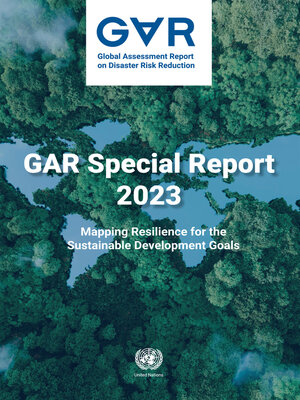Global Assessment Report on Disaster Risk Reduction 2023
ebook ∣ Mapping Resilience for the Sustainable Development Goals
By United Nations Office for Disaster Risk Reduction

Sign up to save your library
With an OverDrive account, you can save your favorite libraries for at-a-glance information about availability. Find out more about OverDrive accounts.
Find this title in Libby, the library reading app by OverDrive.



Search for a digital library with this title
Title found at these libraries:
| Library Name | Distance |
|---|---|
| Loading... |
Global warming will surpass 1.5°C above pre-industrial levels during the next decade, due to greenhouse gas emissions. The constant rise in temperatures and related impacts combine with other pressures, thus increasing risk and undermining resilience. The increasing interconnectedness of people and human systems increases the risk of compound and cascading crises. The maps in this report highlight a number of these resilience deficits that are holding back achievement of key sustainable development goals. At the same time, the report's action case examples show that this is not inevitable, and how action is possible on every continent to stop the worsening spiral of risk and disasters and to accelerate SDG target achievement. Addressing resilience gaps will require the unprecedented scaling-up of resilience investment and adaptation action both from within the public and private sectors, particularly for the most vulnerable countries. As these investments take time to mobilize and prepare, delay will increase the inevitable costs. Action is needed now. Disaster risk reduction sits at the nexus between development, humanitarian and climate change action, and can help foster more-sustainable resilient action in each. Readjusting development pathways requires a re-examination of how prosperity is measured, and a greater emphasis on resilience as key element of sustainable development today and in the future.







